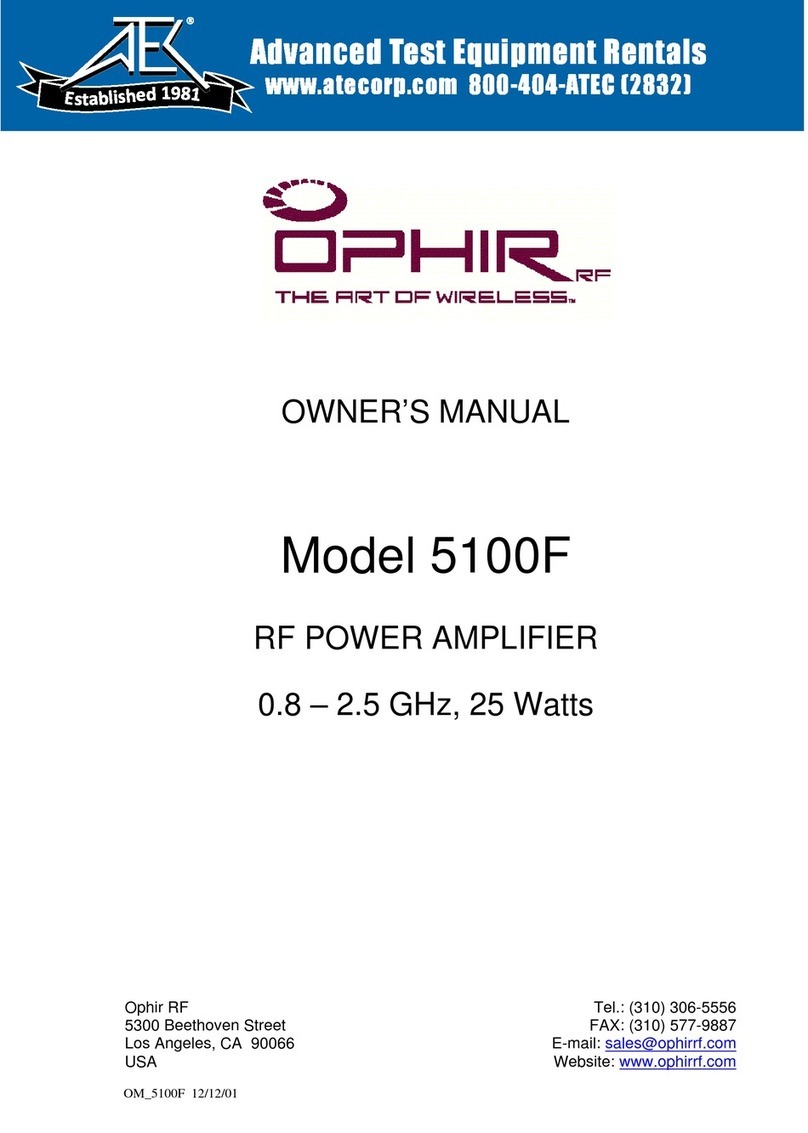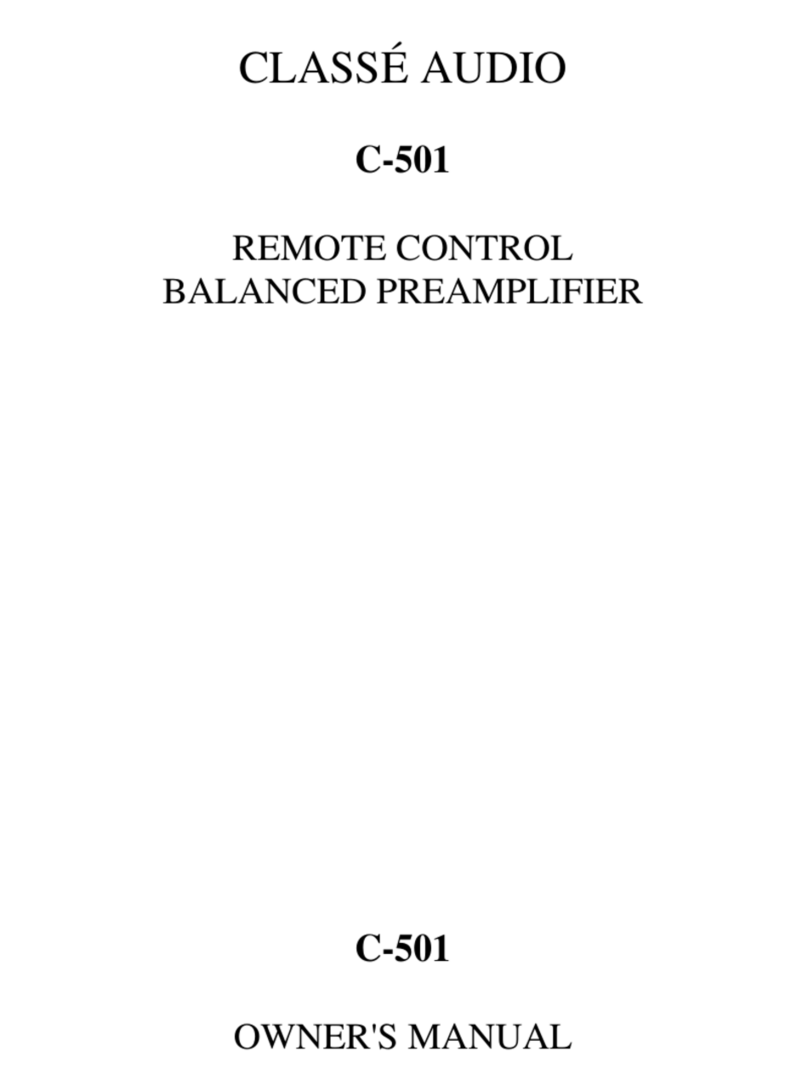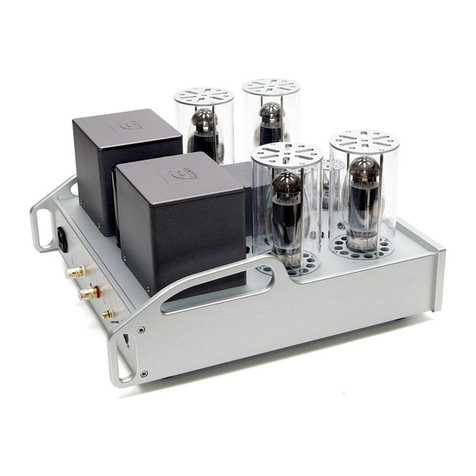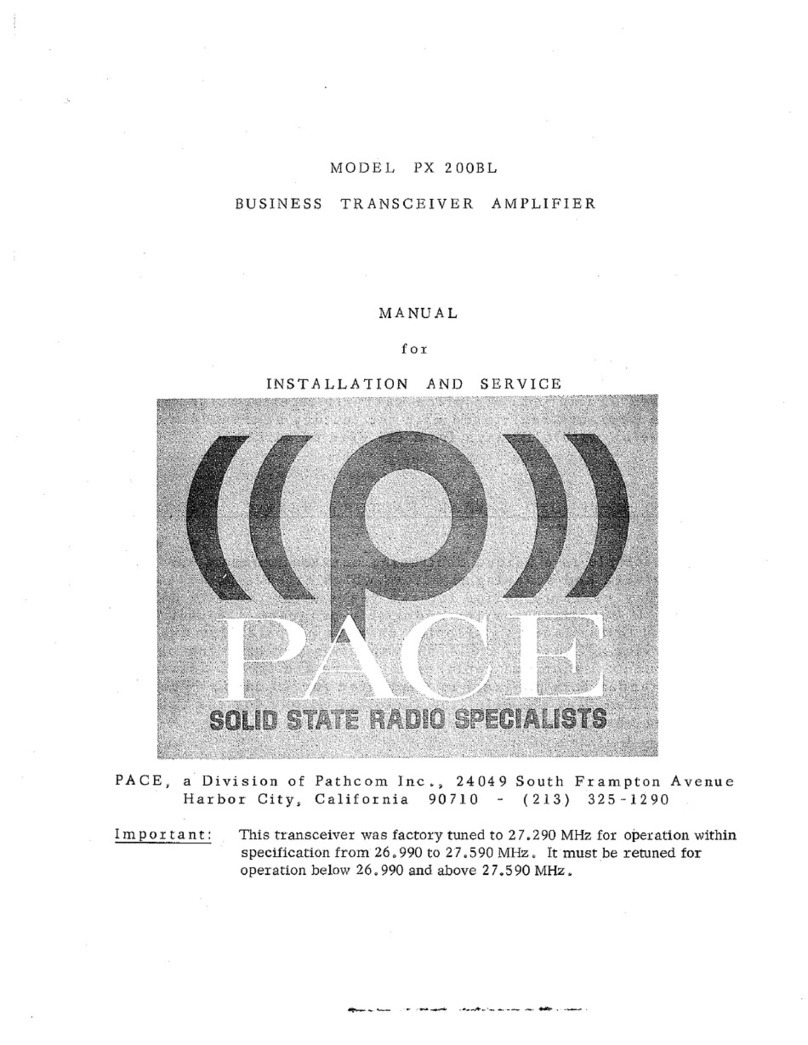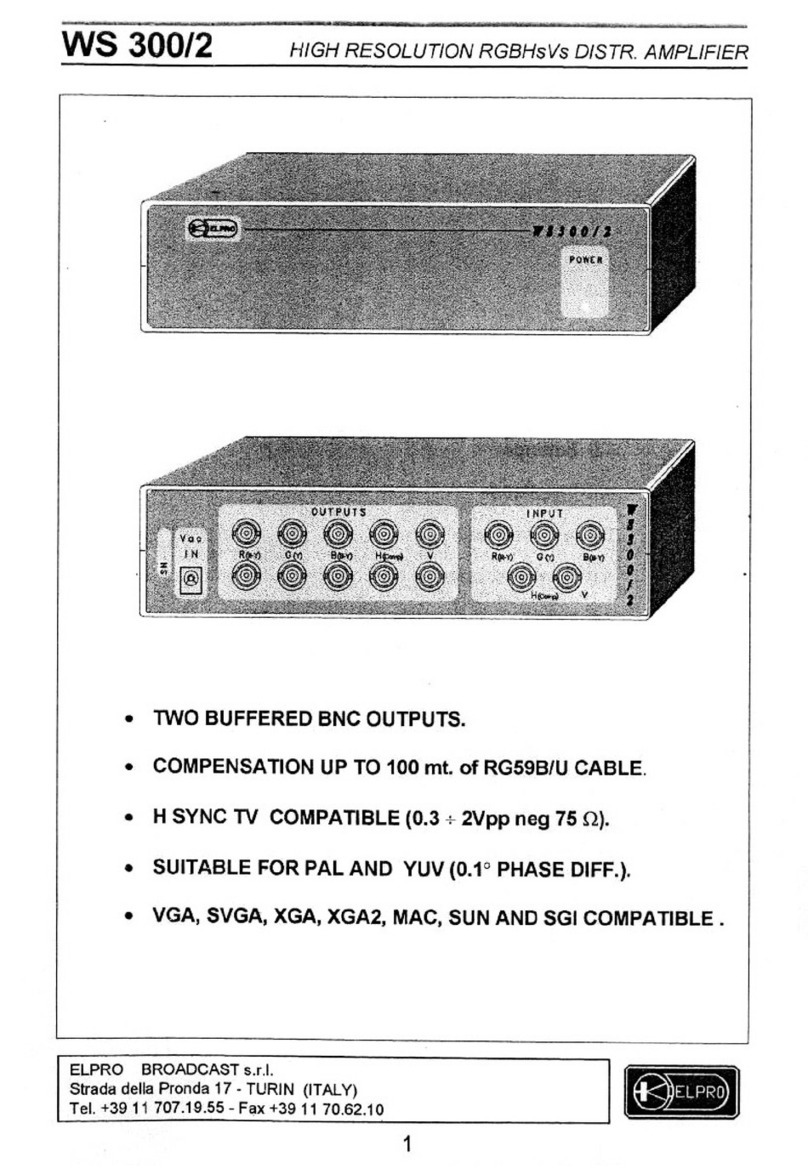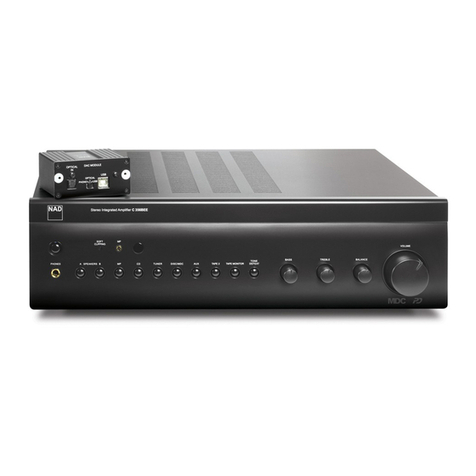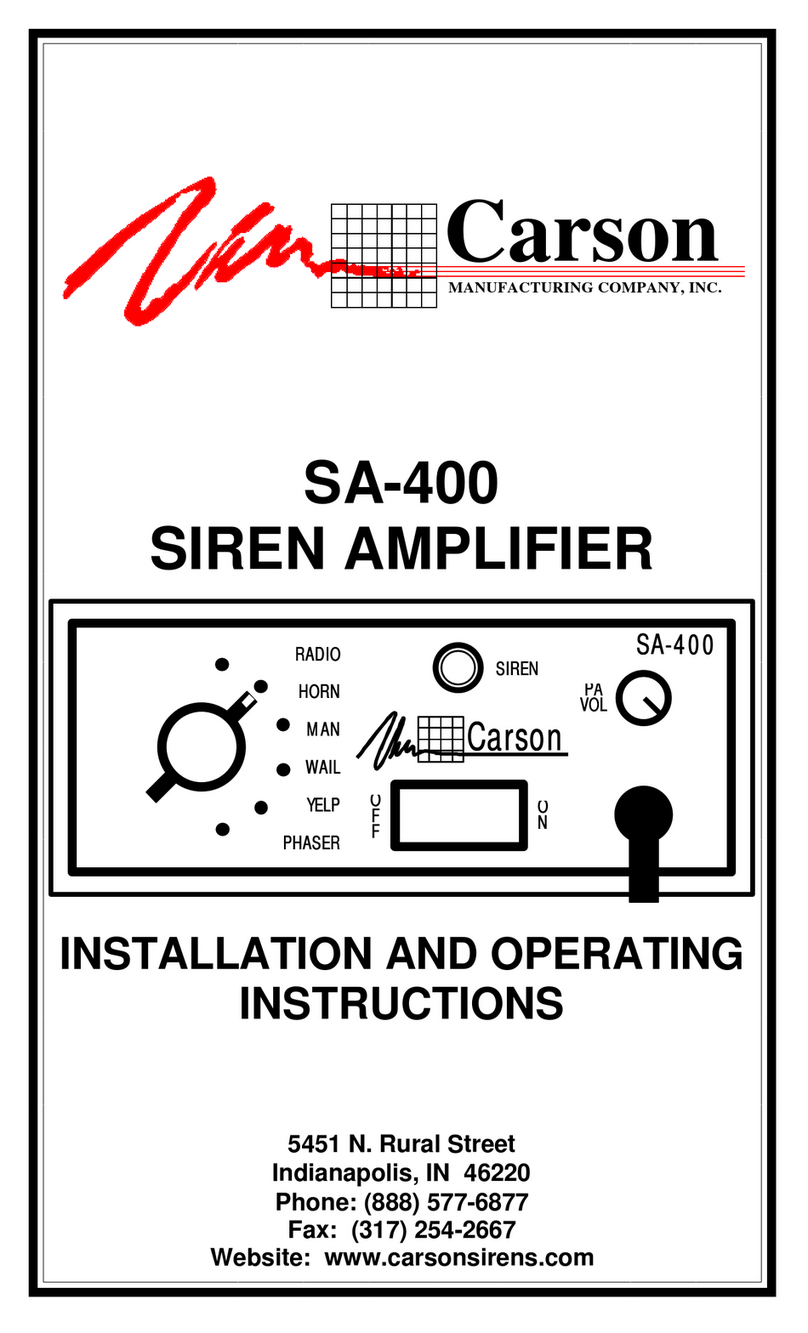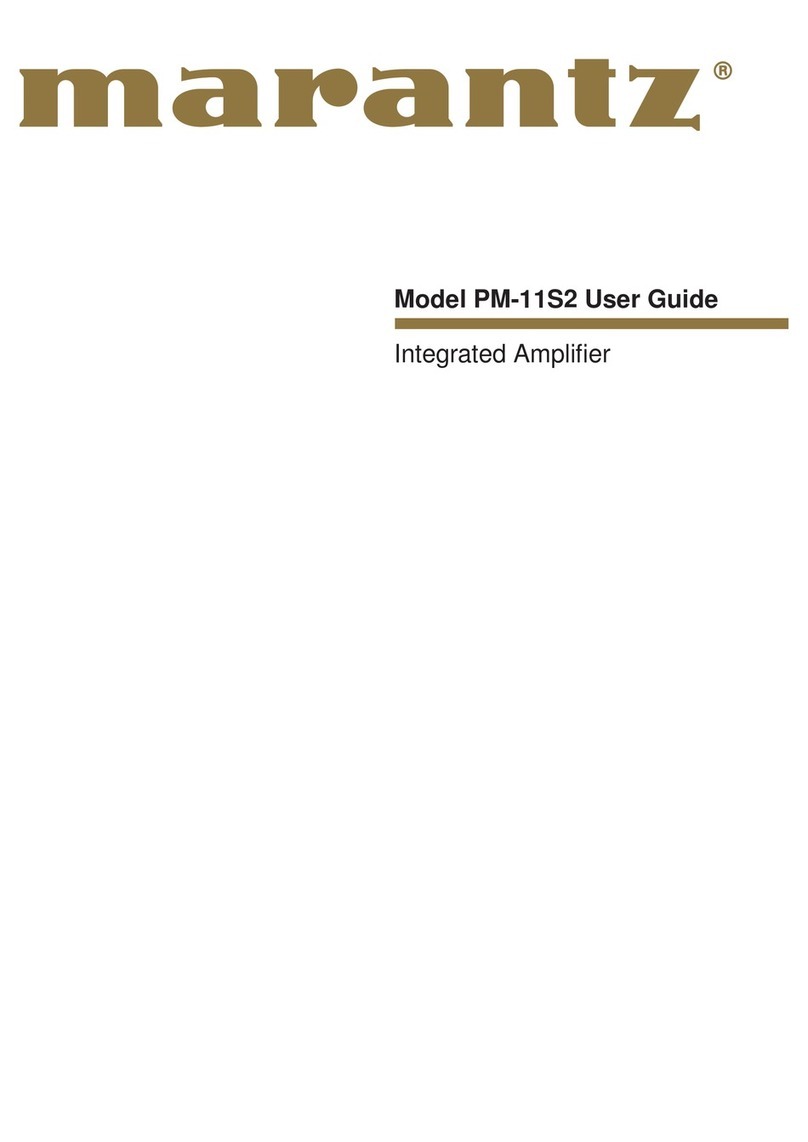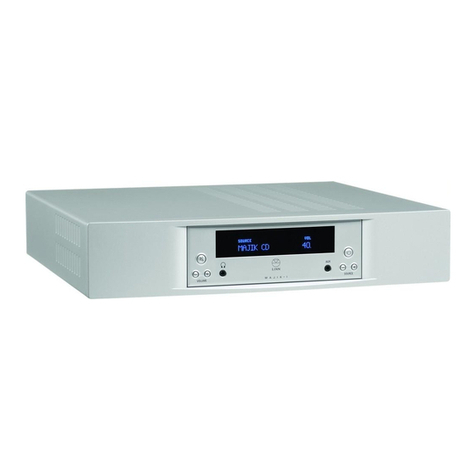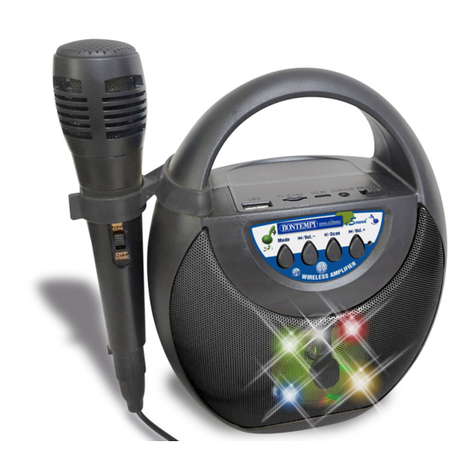RMS RMS120RH User manual

Operation Manual
TITLE: GUITAR AMPLIFIER
MODEL: RMS120RH
DISTRIBUTOR/DEALER
CAUTION
THIS AMPLIFIER HAS BEEN DESIGNED AND CONSTRUCTED TO PROVIDE ADEQUATE POWER
RESERVE FOR PLAYING MODERN MUSIC WHICH MAY REQUIRE OCCASIONAL PEAK POWER.
EXTENDED OPERATION AT ABSOLUTE MAXIMUM POWER IS NOT RECOMMENDED SINCE THIS
COULD DAMAGE THE ASSOCIATED LOUDSPEAKER SYSTEM. PLEASE BE AWARE THAT
MAXIMUM POWER CAN BE OBTAINED WITH V ERY LOW SET TIN GS O F THE MASTER
VOLUME CONTROLS IF THE INPUT SIG NAL IS VERY STRONG.
TECHNICAL SPECIFICATIONS
Rated Power
Frequency Response
Hum and Noise
Input Impedance
Power Consumption
Maximum Gain
Weight
Dimension
120 Watts RMS @ 4ohms load
50 Hz to 8 kHz
-75 dB below rated power
220 k Ohms
220 Watts maximum
105 dB Channel One
55 dB Channel Two
11.0 kg
250mm H x 530mm W x 265mm D
ELECTRICAL CONNECTIONS AND SUPPLY
WARNING: This appliance must be earthed. Please check that the supply voltage details given
on the rating label (located on the rear panel) are in accordance with your electricity supply.
FITTED PLUG: This appliance is fitted with a moulded-on plug. If the socket outlets in the
home are not suitable for the plug supplied with this appliance (or the plug becomes damaged
and requires replacement), it should be cut off and an appropriate three-pin plug fitted as
detailed later this section.
IMPORTANT: A moulded plug severed from the mains lead must be destroyed immediately.
Such a plug with a bared flexible cord is hazardous if engaged in a live socket outlet.
If the fuse of the moulded-on plug is to be replaced, remove the coloured fuse cover on the
underside of the plug, and use a suitably certified 3A fuse approved by ASTA to BS1362, i.e.,
the fuse carries the ASTA mark. The fuse cover must always be replaced. Never use the plug
with the fuse cover omitted. Replacement fuse covers are available from your local Authorised

(14) High: Adjusts the amount of boost or cut (+/-l2db) in the mid-high frequency range (5KHz).
(15) LED #3: This LED lets you know you are using channel two.
(16) Volume: The overall volume level of channel two. This signal then feeds into the MASTER
VOLUME Control.
****************************************************
(22) POWER SOCKET: Connect the supplied power cord to a grounded AC
receptacle in compliance with the voltage and frequency ratings specified on
the rear panel of your amplifier.
Fuse: Replace with the same type fuse.
(23) FX Send: The socket provided for connecting an external device. The output
from this socket should be connected to the external devices input.
(24) FX Return: The Socket provided for connecting the output of an external device.
(25) Loudspeakers: Connect your loudspeakers here. The impedance of the cabinet’s
should not be less than 4 Ohms. Connecting cabinets that have a lower impedance than
4 Ohms will result in the amplifier overheating. Continual use in this manner may cause
permanent damage.
RMS120RH REAR PANEL FUNCTIONS
(17) Reverb: Adjusts the amount of reverb on both channels.
(19) Effects Insert: A 1/4" 3 conductor jack allowing inserting an external effects device such
as a chorus or delays into the signal chain. Both input and output is on the same jack.
(20) Footswitch: A 1/4" 2 conductor jack that allows the channels to be switched back and forth
for soloing or a special effect.
(21) Power: The on/off switch provides electrical power to the unit.
(18) CD/LINE Input: Sockets for connection of external CD play.
22 23
24
25
RMS120RH FRONT PANEL FUNCTIONS
235678910 11 12 13 14
416 17
15 18 19 21
CHANNEL ONE:
CHANNEL TWO:
(1) Guitar Input: This is a instrument input for plugging in virtually anything! You may
plug in a guitar, keyboard, drum machine, mixer, cassette deck, CD or any pre-amplified signal.
If you notice any unwanted distortion in this case, turn down the volume control on the device
in question
(2) Gain : The pre-amp gain for channel one. At lower levels, it delivers a clean signal.
Increasing it delivers a bluesy tone and full up the harder edge found in today's music.
(9) Gain On: A switch to engage the gain circuit on channel two. This will allow a volume
change to be kicked in for soloing or in a boost function. It is also available on the footswitch.
This gives you the versatility of a three channel amp.
(3) Voice: An overall tone control to allow select tailoring of the sound. It's purpose is to shift
the amplitude of the midrange and treble tone frequencies. It will help you dial in your special
sound.
(10) LED #2: This LED lets you know you are engaging the gain control circuitry. This is ONLY
available on channel two.
(5) High: Adjusts the amount of boost or cut (+/- 12dB) the higher tonal ranges.
(12) Low: Adjusts the amount of boost or cut (+1-12db) in the low frequency range (150Hz).
(4) Low: Adjusts the amount of boost or cut (+/-12dB) the lower tonal ranges.
(11) Gain: The pre-amp gain for channel two. At lower levels, it delivers a clean signal.
Increasing it delivers a bluesy tone and full up the harder edge found in today's music. This
allows the two channels to be set up with different sounds AND tonal variations and you can
switch between them.
(6) LED #1: This LED lets you know you are using channel one.
(13) Mid: Adjusts the amount of boost or cut (+/-12db) in the middle frequency range (600Hz).
(7) Volume: This is the overall volume level of channel one. This signal then feeds into the
MASTER VOLUME Control.
(8) Channel Select: This switch selects between the two channels. It is linked to a footswitch
jack for remote switching.
20
